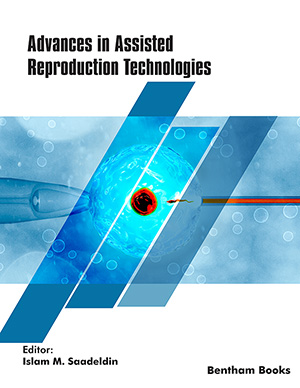Abstract
Background: Drug-resistant tuberculosis remains a health security threat and resistance to second-line drugs limits the options for treatment. Consequently, there is an utmost need for identifying and characterizing new biomarkers/drug targets of prime importance. Membrane proteins have an anticipated role in biological processes and could qualify as biomarkers/drug targets. Streptomycin (SM) is recommended as a second-line treatment regimen only when amikacin resistance has been confirmed. As extensively drug-resistant (XDR) isolates are frequently cross-resistant to second-line injectable drugs, an untapped potential for the continued use of SM has been suggested.
Objective: The study aimed to analyze the membrane proteins overexpressed in SM resistant isolates of Mycobacterium tuberculosis using proteomics approaches.
Methods: Membrane proteins were extracted employing sonication and ultracentrifugation. Twodimensional gel electrophoresis (2DGE) of membrane proteins was performed and identification of proteins was done by liquid chromatography-mass spectrometry (LCMS) and bioinformatics tools.
Results: On analyzing the two-dimensional (2D) gels, five protein spots were found overexpressed in the membrane of SM resistant isolates. Docking analysis revealed that SM might bind to the conserved domain of overexpressed proteins and Group-based prediction system-prokaryotic ubiquitinlike protein (GPS-PUP) predicted potential pupylation sites within them.
Conclusion: These proteins might be of diagnostic importance for detecting the cases early and for exploring effective control strategies against drug-resistant tuberculosis, particularly SM.
Keywords: Streptomycin, tuberculosis, membrane proteins, proteomics, two-dimensional gel electrophoresis, mass spectrometry.
[http://dx.doi.org/10.1016/S1472-9792(02)00071-9] [PMID: 12758183]
[http://dx.doi.org/10.3181/00379727-55-14461]
[http://dx.doi.org/10.1128/AAC.00860-20] [PMID: 32540971]
[http://dx.doi.org/10.32607/20758251-2017-9-1-15-25] [PMID: 28461970]
[http://dx.doi.org/10.1016/j.molcel.2013.01.029] [PMID: 23438854]
[http://dx.doi.org/10.1002/rcm.7160] [PMID: 26377007]
[http://dx.doi.org/10.1002/cfg.211] [PMID: 18629250]
[http://dx.doi.org/10.1186/1477-5956-10-14] [PMID: 22375954]
[http://dx.doi.org/10.1016/j.jprot.2013.08.025] [PMID: 24036035]
[PMID: 23627108]
[http://dx.doi.org/10.3109/07388559709146607] [PMID: 9192471]
[http://dx.doi.org/10.1073/pnas.0709530105] [PMID: 18316738]
[http://dx.doi.org/10.1371/journal.pone.0139414] [PMID: 26436944]
[http://dx.doi.org/10.1017/S0031182016002377] [PMID: 27976597]
[http://dx.doi.org/10.3389/fmicb.2018.01627] [PMID: 30072978]
[http://dx.doi.org/10.1186/1477-5956-8-59] [PMID: 21083941]
[http://dx.doi.org/10.1128/AAC.46.8.2720-2722.2002] [PMID: 12121966]
[http://dx.doi.org/10.1093/jac/dkm117] [PMID: 17483147]
[http://dx.doi.org/10.1016/0076-6879(79)55024-1] [PMID: 156832]
[http://dx.doi.org/10.1016/0003-2697(76)90527-3] [PMID: 942051]
[http://dx.doi.org/10.1002/(SICI)1522-2683(20000401)21:6<1037:AID-ELPS1037>3.0.CO;2-V] [PMID: 10786879]
[http://dx.doi.org/10.1038/227680a0] [PMID: 5432063]
[http://dx.doi.org/10.1021/ac950914h] [PMID: 8779443]
[http://dx.doi.org/10.1002/prot.21495] [PMID: 17598144]
[http://dx.doi.org/10.1093/nar/gkn186] [PMID: 18424796]
[http://dx.doi.org/10.1039/c1mb05217a] [PMID: 21850344]
[http://dx.doi.org/10.1186/1741-7007-10-95] [PMID: 23198822]
[http://dx.doi.org/10.1021/pr200141c] [PMID: 21517111]
[http://dx.doi.org/10.1186/1477-5956-10-12] [PMID: 22364187]
[http://dx.doi.org/10.1177/0300060520910042] [PMID: 32216499]
[http://dx.doi.org/10.1099/mic.0.024802-0] [PMID: 19332811]
[http://dx.doi.org/10.1128/JB.01001-15] [PMID: 27002134]
[http://dx.doi.org/10.3390/molecules25102348] [PMID: 32443484]
[http://dx.doi.org/10.1128/IAI.00229-12] [PMID: 22802345]
[http://dx.doi.org/10.3389/fcimb.2017.00240] [PMID: 28642844]
[http://dx.doi.org/10.1371/journal.pone.0103811] [PMID: 25080351]
[http://dx.doi.org/10.1038/srep13430] [PMID: 26303024]
[http://dx.doi.org/10.1074/mcp.RA117.000296] [PMID: 29018126]
[http://dx.doi.org/10.1155/2018/3525302] [PMID: 29736404]
[http://dx.doi.org/10.1038/s41598-021-91812-0] [PMID: 34117327]
[http://dx.doi.org/10.1128/IAI.01990-06] [PMID: 17387166]
[http://dx.doi.org/10.1128/JB.05051-11] [PMID: 21764934]
[http://dx.doi.org/10.1371/journal.pone.0181714] [PMID: 28813434]
[http://dx.doi.org/10.1016/j.jot.2016.01.001] [PMID: 30035079]
[http://dx.doi.org/10.1186/1755-8794-1-18] [PMID: 18505592]
[http://dx.doi.org/10.1159/000492887] [PMID: 30138912]
[http://dx.doi.org/10.15537/smj.2021.42.7.20200582] [PMID: 34187915]
[http://dx.doi.org/10.1371/journal.pone.0015494] [PMID: 21085589]
[http://dx.doi.org/10.1093/glycob/cwq173] [PMID: 21045009]
[http://dx.doi.org/10.1371/journal.pone.0039245] [PMID: 22745722]
[http://dx.doi.org/10.1186/s12900-019-0100-4] [PMID: 30646888]
[PMID: 17002220]
[PMID: 17659481]
[http://dx.doi.org/10.1177/095632020701800501] [PMID: 18046958]
[http://dx.doi.org/10.2174/092986711795590129] [PMID: 21517780]
[http://dx.doi.org/10.4155/fmc.15.72] [PMID: 26230881]
[http://dx.doi.org/10.1021/acsinfecdis.6b00102] [PMID: 27726334]
[http://dx.doi.org/10.1039/C9MD00179D] [PMID: 31534651]
[http://dx.doi.org/10.1126/science.1091176] [PMID: 14671303]



























